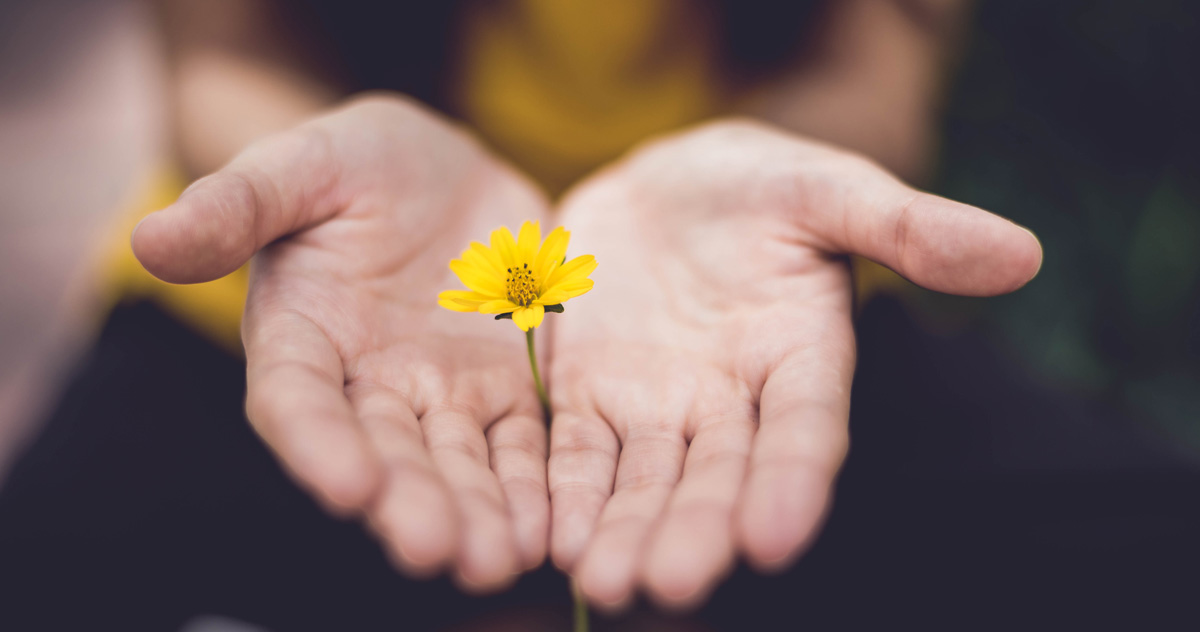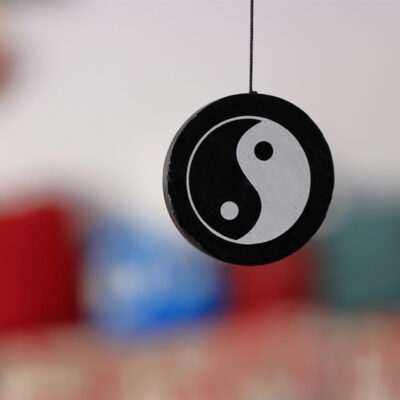During the eating disorder recovery journey, there are so many fears that will be present, and so many changes that will at times likely feel almost impossible to work through.
However, at their core, all of these very difficult changes come down to having to deal with extremely scary and anxiety-provoking thoughts and feelings. At their core, as impossible or as cliche as this may sound, nothing is truly good or bad but it is our thinking, and judgments of our feelings, that make them feel this way.
Of course, knowing this alone does not make this journey any easier. In so many ways, eating disorders help us to cope with our thoughts and feelings to avoid as much pain and discomfort as possible, and this is not an easy thing to change.
If we never break an eating disorder rule, we can attempt to avoid the anxiety, fear, self-criticism and so many other painful thoughts and feelings that come from doing so. When we restrict or binge, we are attempting to, and are often able to temporarily, avoid certain feelings and numb out. If we are always striving for a smaller body, we can try to avoid the thoughts and feelings of self-hate and disgust we feel at the body we have now, or the one we imagine we will end up with.
Eventually though, we often realize that the price we’re paying to maintain these coping strategies is too high…. Yet we get stuck sometimes, as the thought of having to face all of the unbearable thoughts and feelings that come with recovery also feels like perhaps too high a price to pay for things to change.
This is why finding new ways for dealing with thoughts and feelings is so important on the recovery journey - not just to help find new ways of coping in the world without the eating disorder, but to help make the changes that are a necessary part of the recovery journey feel more tolerable so that you don't give up, as this is not a fast or easy journey.
Below are some effective new ways for dealing with emotions, especially difficult ones, during eating disorder recovery and beyond. None of these will feel easy or natural at first, but do your best to remember that very few things do.... your eating disorder thoughts and reactions strengthened over time, and so new ways of thinking, reacting and being will also take time to feel easy, natural and automatic. But the journey can be beautiful, and the result will be so worth it.

The Concept of Acceptance
As hard as this will be, first being willing to feel our feelings, as uncomfortable as they can be, can help so much in our ability to tolerate them, and for them to not feel so overwhelming.
At their core, all emotions really are just physical sensations in our body….. Some are more uncomfortable than others, but without the stories we tell ourselves, and the meaning and fears we create around them, they really are just feelings…. And the less we fight them, try to suppress them, try to avoid them, or tell ourselves how terrible it is we’re feeling them, the less overwhelming they will feel, and the sooner they will naturally pass through us on their own.
In Buddhism, there is The Parable of the Second Arrow. According to this parable the Buddha said, ‘In life, we can’t always control the first arrow. However, the second arrow is our reaction to the first. This second arrow is optional.’ And it is this second arrow that causes our real suffering…. If the first arrow is our natural feelings and emotions that are a part of life, it is the second arrow - the stories, judgements and reactions we have about our feelings - that causes us to truly suffer. It is these stories, judgments and reactions to our original, natural emotions that cause our feelings to feel more overwhelming, as well as cause us to feel further uncomfortable emotions on top of our original emotion such as fear about our sadness, anxiety about our anxiety, anger about our fear, fear about our anger etc.
In Acceptance and Commitment Therapy, a wonderful type of therapy often used with eating disorders and so much more, this concept is referred to as ‘The Struggle Switch’. In his book The Happiness Trap, therapist Dr. Russ Harris describes the concept this way:
“Have you ever seen one of those old cowboy movies where the bad guy falls into a pool of quicksand and the more he struggles, the faster it sucks him under? If you ever fall into quicksand, struggling is the worst thing you can do. What you’re supposed to do is lie back, stretch out, keep still, and let yourself float on the surface. (Then whistle for your horse to come and rescue you!) This takes real presence of mind, because every instinct in your body tells you to struggle; but the more you struggle, the worse your situation becomes. The same principle applies to difficult feelings: the more we struggle with them, the more trouble we create for ourselves.”
The concept of The Struggle Switch is expanded on in this video by Dr. Russ Harris here:
As hard as this is, once we understand the benefit for ourselves of working on accepting our feelings just as they are, the practices of Expansion, RAIN, or Dropping Anchor will help us learn and practice how to do this.
The Practices of Expansion, RAIN, and Dropping Anchor
Not wanting to feel our difficult emotions, trying to avoid them, and telling ourselves scary stories about them is so normal…. We’re rarely taught how to do otherwise, and it really does take practice to be able to deal with them differently.
However, learning to do this, being patient with yourself and diligent in applying these practices over and over until they begin to eventually feel automatic, will help so much on the recovery journey.
There are many different practices for how to deal effectively with our emotions. However, these three are the ones I have found to be the most helpful in my own life and with coaching clients.
If one resonates with you more than the others, you can stick with this one. For very overwhelming emotions though, Dropping Anchor will likely feel the most helpful.
1. Expansion
Expansion is a practice from Acceptance and Commitment Therapy. In his book The Happiness Trap, Dr. Russ Harris describes the practice as a way for “Making room for unpleasant feelings and sensations instead of trying to suppress them or push them away. As you open up and make space for these feelings, you will find they bother you much less, and they “move on” much more rapidly, instead of “hanging around” and disturbing you.”
Expansion involves four steps, and you can use them with any emotion. The four steps are:
- Observe your feelings
- Breathe into them
- Make room for them
- Allow them to be there.
To learn how to practice Expansion with unpleasant emotions, I like this video that guides you through each step:
Like so many things, Expansion may sound simple but it is definitely not always easy…. However, with practice and time, it really does become easier and more automatic, and the benefits are so huge.
This practice can be especially helpful for getting through the anxiety, guilt and fear that inevitably comes up when you begin challenging eating disorder rules and noticing changes with your body. This practice was indispensable for me during my recovery, and I still use it almost every day, whether it is with disappointment over changed plans, and argument with my partner, anxiety about an upcoming commitment, or so many other difficult emotions I would have tried to avoid or suppress in the past, thereby limiting my freedom and flexibility and making me feel trapped.

2. The RAIN of Self-Compassion
The RAIN of Self-Compassion is a beautiful exercise based on Buddhist principles taught by Buddhist teacher, author, and psychotherapist Tara Brach (whose books Radical Acceptance and True Refuge were some of my favourites during my recovery journey).
This practice is similar to Expansion, but consciously involves the concept of self-compassion, which I love and believe is so integral to the recovery journey.
Like Expansion, RAIN involves four steps. They are:
- Recognize what is going on
- Allow the experience to be there, just as it is
- Investigate with interest and care
- Nurture with self-compassion.
Tara Brach has a wonderful handout that describes this practice even further that can be found here. In it, the four steps of RAIN are described as:
R — Recognize What’s Going On.
Recognizing means consciously acknowledging, in any given moment, the thoughts, feelings, and behaviors that are affecting us. Like awakening from a dream, the first step out of the trance of unworthiness is simply to recognize that we are stuck and subject to painfully constricting beliefs, emotions, and physical sensations. Common signs of the trance include a critical inner voice, feelings of shame or fear, the squeeze of anxiety or the weight of depression in the body. Recognizing can be a simple mental whisper, noting what has come up.
A — Allow the Experience to be There, Just as It Is.
Allowing means letting the thoughts, emotions, feelings, or sensations we have recognized simply be there, without trying to fix or avoid anything. When we’re caught in self-judgment, letting it be there doesn’t mean we agree with our conviction that we’re unworthy. Rather, we honestly acknowledge the arising of our judgment, as well as the painful feelings underneath.
Many students I work with support their resolve to pause and let be by silently offering an encouraging word or phrase to themselves. For instance, you might feel the grip of fear and mentally whisper, Yes, or It’s ok, in order to acknowledge and accept the reality of your experience in this moment.
I — Investigate with Interest and Care.
Once we have recognized and allowed what is arising, we can deepen our attention through investigation. To investigate, call on your natural curiosity - the desire to know truth - and direct a more focused attention to your present experience. You might ask yourself: What most wants attention? How am I experiencing this in my body? What am I believing? What does this vulnerable place want from me? What does it most need? Whatever the inquiry, your investigation will be most transformational if you step away from conceptualizing and bring your primary attention to the felt-sense in the body.
When investigating, it is essential to approach your experience in a non-judgmental and kind way. This attitude of care helps create a sufficient sense of safety, making it possible to honestly connect with our hurts, fears and shame.
N — Nurture with Self-Compassion.
Self-compassion begins to naturally arise in the moments that we recognize we are suffering. It comes into fullness as we intentionally nurture our inner life with self-care. To do this, try to sense what the wounded, frightened or hurting place inside you most needs, and then offer some gesture of active care that might address this need. Does it need a message of reassurance? Of forgiveness? Of companionship? Of love?
Tara Brach goes on to advise:
"Experiment and see which intentional gesture of kindness most helps to comfort, soften or open your heart. It might be the mental whisper, I’m here with you. I’m sorry, and I love you. I love you, and I’m listening. It’s not your fault. Trust in your goodness.
In addition to a whispered message of care, many people find healing by gently placing a hand on the heart or cheek; or by envisioning being bathed in or embraced by warm, radiant light. If it feels difficult to offer yourself love, bring to mind a loving being - spiritual figure, family member, friend or pet - and imagine that being’s love and wisdom flowing into you.
When the intention to awaken self-compassion is sincere, the smallest gesture of turning towards love, of offering love - even if initially it feels awkward - will nourish your heart."
"When you’ve completed the active steps of RAIN, it’s important to just notice your own presence and rest in that wakeful, tender space of awareness. The fruit of RAIN is realizing that you are no longer imprisoned in the trance of unworthiness, or in any limiting sense of self. In other versions of RAIN, this is the N - not-identified. Give yourself the gift of becoming familiar with the truth and natural freedom of your being; it is mysterious and precious!"
For even more information and guidance with this beautiful practice, Tara Brach has a talk on it that can be found here, and a guided meditation that can be found here:
3. For Very Strong, Overwhelming Emotions: Dropping Anchor
The final practice I want to share for dealing with difficult emotions is called 'Dropping Anchor', and is described fully in this ebook by Dr. Russ Harris.
Dr. Harris explains the practice this way:
"… no intervention is more effective than what I like to call ‘dropping anchor’ exercises. I call them this because we are basically learning to ‘drop an anchor’ in the midst of an ‘emotional storm’. These exercises don’t require you to speak, or to self-talk, so they are especially useful when you are overwhelmed. Now before we go any further, let’s just be clear: dropping an anchor won’t make the storm go away; it will just hold you steady until the storm passes. The storm may pass quickly, or it may pass slowly, or it may even get worse before it gets better. The anchor holds you steady during this time, so the storm doesn’t sweep you away."
Again, we can see that the purpose of this practice is not to control or get rid of our feelings (the struggle switch, or second arrow), but rather to learn how to stay grounded and not be swept away and overwhelmed by them, or exacerbate them.

The steps to walk yourself through when you are experiencing a very overwhelming emotion, when Expansion or RAIN may feel less effective, are:
- Silently and kindly acknowledge to yourself that you’re hurting, you’re in pain.
- Push your feet hard into the floor.
- Straighten your back; if sitting, sit forward in your chair.
- Press your fingertips together, or stretch your arms, or shrug your shoulders.
- Acknowledge the painful thoughts and feelings that are present, and also notice… there’s a body around that pain – a body that you can move and control. So notice your whole body now – hands, feet, back. … have a stretch. … Press your feet down.
- Now also look around the room and notice 5 things you can see.
- And also notice 3 or 4 things you can hear.
- And also notice what you are doing.
- So notice there are painful thoughts/feelings/memories here, and …
- Also notice your body in the chair … move it, stretch it,
- And there’s a room around you.
- And come back to what you are doing, and engage fully in the task or activity at hand.
Final Thoughts
Like almost everything on the recovery journey, practice, time and patience are so key.... you did not develop your eating disorder overnight, and you have likely been thinking your eating disorder thoughts and practicing your eating disorder behaviours for a very long time. Therefore, it makes sense that any new practice will take time and repetition to feel natural for you. However, I believe that this time and effort will feel so worth it for you.
When we think about it, how much of our lives are dictated by trying to avoid painful and unpleasant feelings? How many things would we go for if we could trust that we could cope with whatever painful feelings might come along as a result?
When we start to see that with practice we can get better at handling our unpleasant emotions, not only can we begin to feel more able to push ourselves and take scary but meaningful actions on our recovery journey, but we also begin to see our journey is in fact a chance to develop wonderful skills for dealing with life that will serve us not just in our recovery, but in our lives beyond.
In my own life, all of my greatest coping strategies and my views on life that I am so grateful for are because of what I learned in order to recover. Now looking back, I find myself so grateful for the struggle of recovery because of the strengths and skills I was able to develop because of it.
I hope, whatever you are going through, that you can find this same benefit from your journey. There are so many riches hidden here, even if they may come in the most painful of packages.
With so much warmth, love, and optimism for your journey,

In Practice:
- The next time you feel an unpleasant emotion, such as anxiety, guilt, fear, anger, sadness, or any other that feels very challenging for you, see if you can practice either Expansion or RAIN with it. If the feeling is very strong, practice Dropping Anchor. Note how this was for you, either in your journal or just in your mind.
- The next time you feel an unpleasant emotion (if it's not too overwhelming, in which case practice Dropping Anchor again), try to practice Expansion or RAIN - whichever one you didn't try before. Note how this was for you, either in your journal or just in your mind, and decide which practice, Expansion or RAIN, feels best to you.
- Each day over the next week, try to consciously use these practices at least once a day whenever you feel an unpleasant emotion - Expansion or RAIN if the emotion isn't too overwhelming, and Dropping Anchor if it is.
- Continue to do this as much as you can. With time, you may find that it begins to happen automatically.... and that the feelings which felt unbearable before, now feel less so....
Support For Your Journey
If you feel you could use more support on your eating disorder recovery journey I would love to connect with you. Contact me to book a free video discovery call so that we can explore if working together would be a good fit. I would love to hear from you.












Colleen
I’m so glad I stumbled across this page! Thank you for reminding us that difficult emotions span beyond recovery, but are manageable with proper resources.